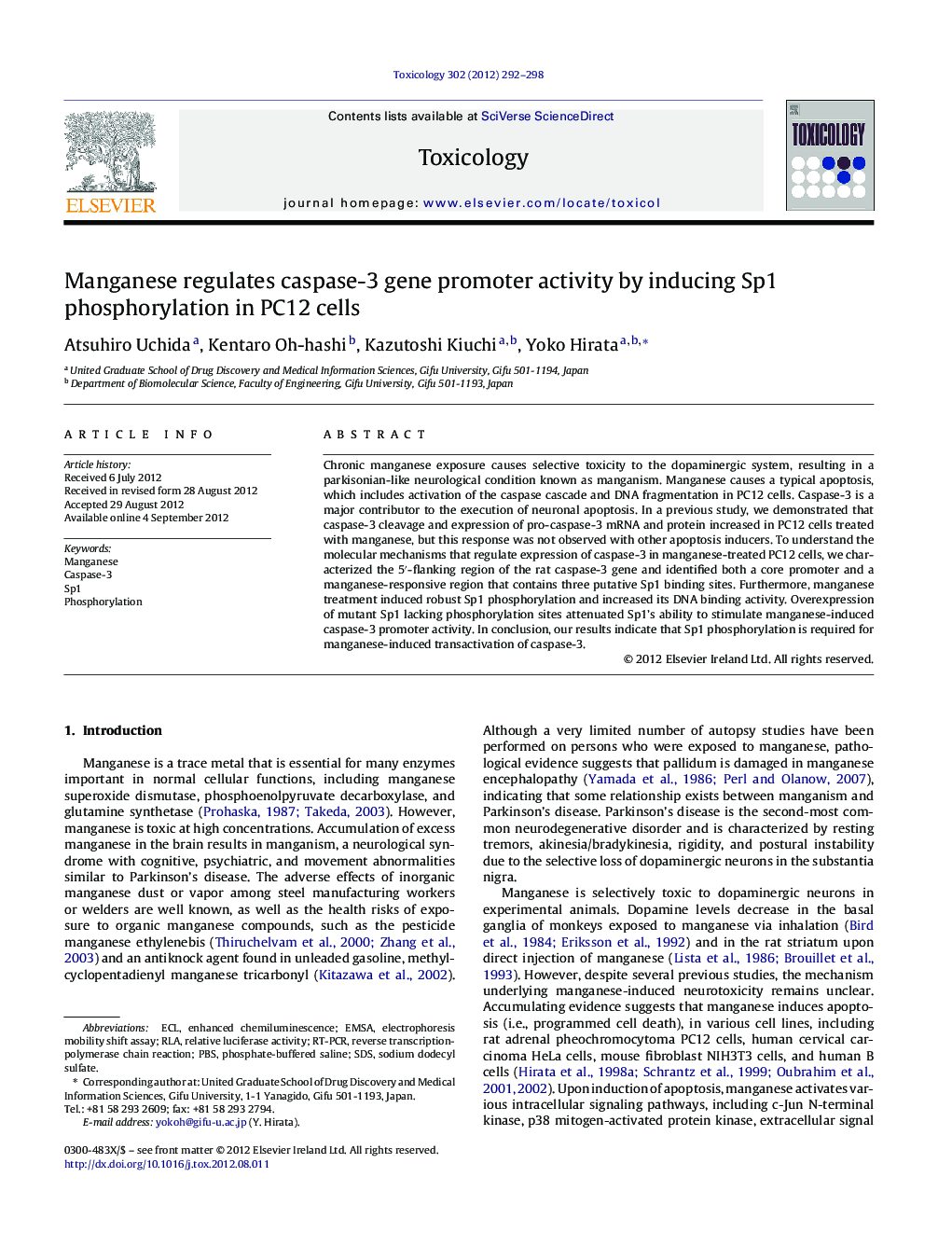| Article ID | Journal | Published Year | Pages | File Type |
|---|---|---|---|---|
| 2595728 | Toxicology | 2012 | 7 Pages |
Chronic manganese exposure causes selective toxicity to the dopaminergic system, resulting in a parkisonian-like neurological condition known as manganism. Manganese causes a typical apoptosis, which includes activation of the caspase cascade and DNA fragmentation in PC12 cells. Caspase-3 is a major contributor to the execution of neuronal apoptosis. In a previous study, we demonstrated that caspase-3 cleavage and expression of pro-caspase-3 mRNA and protein increased in PC12 cells treated with manganese, but this response was not observed with other apoptosis inducers. To understand the molecular mechanisms that regulate expression of caspase-3 in manganese-treated PC12 cells, we characterized the 5′-flanking region of the rat caspase-3 gene and identified both a core promoter and a manganese-responsive region that contains three putative Sp1 binding sites. Furthermore, manganese treatment induced robust Sp1 phosphorylation and increased its DNA binding activity. Overexpression of mutant Sp1 lacking phosphorylation sites attenuated Sp1's ability to stimulate manganese-induced caspase-3 promoter activity. In conclusion, our results indicate that Sp1 phosphorylation is required for manganese-induced transactivation of caspase-3.
